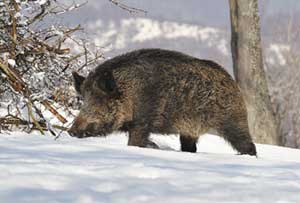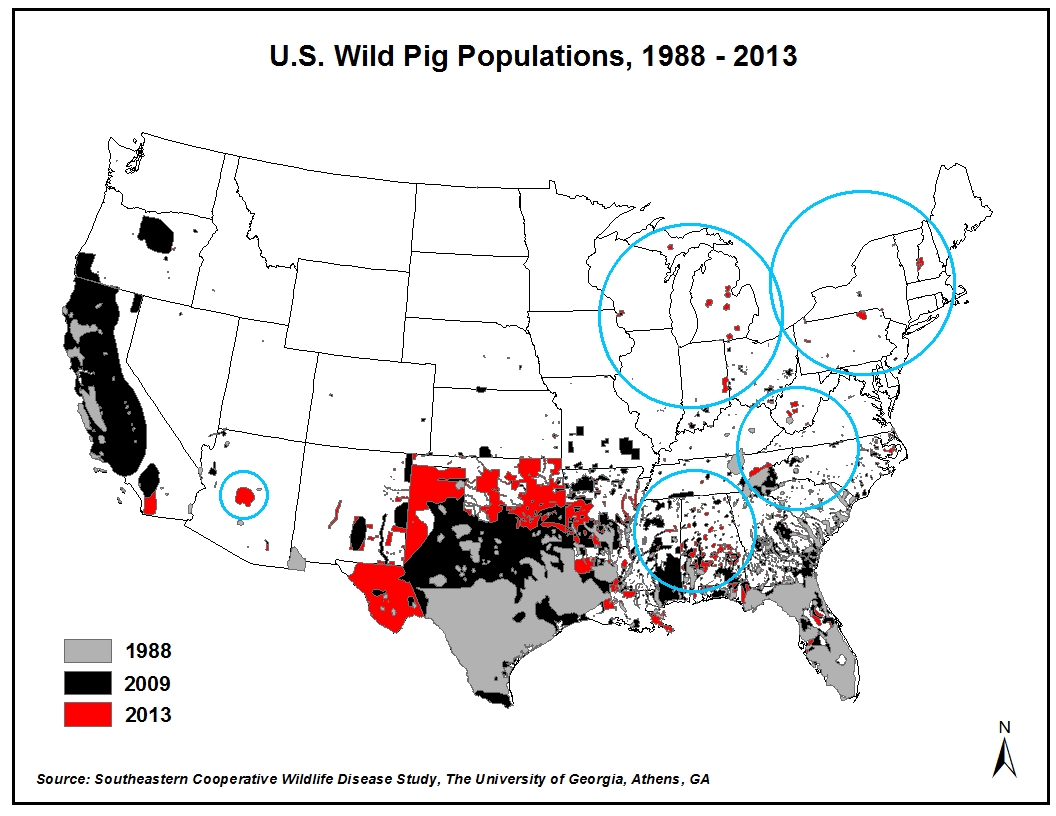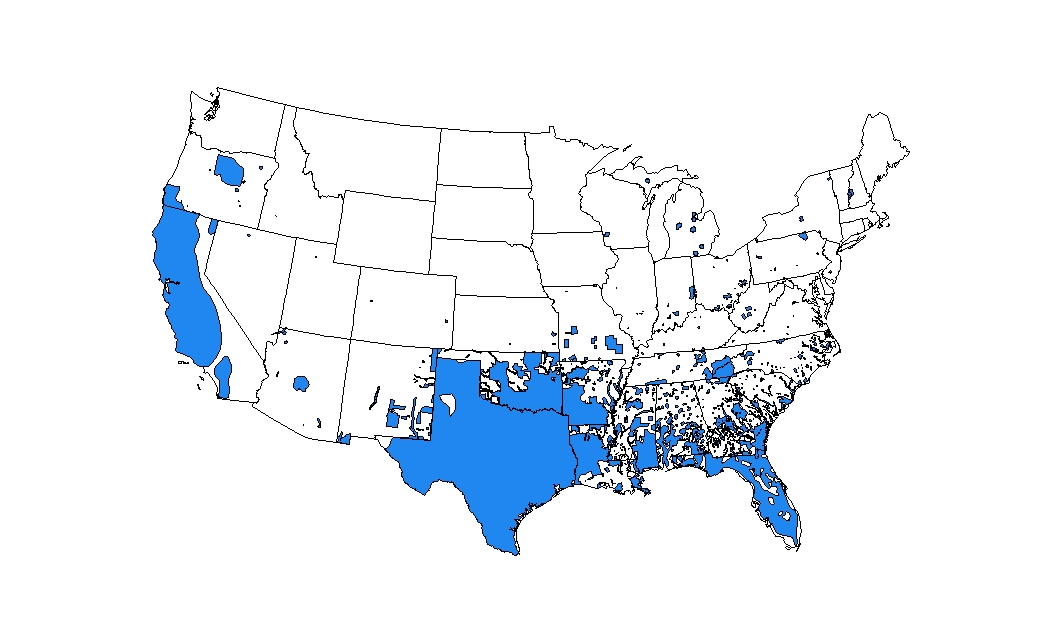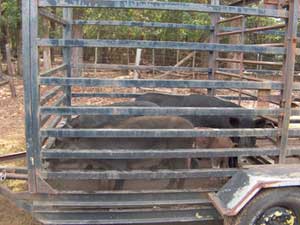History of Wild Pigs
Wild pigs (also known as wild hogs, wild boar, or feral swine) are an Old World species and are not native to the Americas. The first wild pigs in the United States originated solely from domestic stock brought to North America by early European explorers and settlers. Many years later, Eurasian wild boar were introduced into parts of the United States for hunting purposes. In areas where domestic pigs and Eurasian wild boar were found together in the wild, interbreeding occurred. Today, many hybrid populations exist throughout the wild pig’s range.
How did Wild Pigs Get Here?
Pigs were first introduced in the 1500’s to what is now the southeastern U.S. by Spanish Explorer, Hernando DeSoto. In the centuries following European exploration and colonization of the eastern U.S., free-range livestock management practices and escapes from enclosures resulted in the establishment of wild pig populations and promoted their spread.
 Euarasian Wild Boar
Euarasian Wild Boar
Introduction of Eurasian Wild Boar
In the early 1900’s, Eurasian or Russian wild boar were introduced into portions of the United States.
Introduction in 1912 | Secondary Introduction
Additional introductions and escapes of Eurasian wild boar from privately owned, “game-proof” fenced hunting preserves have continued through the present.
The Range of Wild Pigs Today
- Wild pigs have been reported in at least 45 states
- Populations now exist as far north as Michigan, North Dakota, and Oregon
- Range expansion over the last 20 years is mostly a result of illegal translocation of pigs by humans


Distribution of Feral Pigs in the United States in 2014 (Courtesy of Southeastern Cooperative Wildlife Disease Study, University of Georgia).
 Wild pigs awaiting transport to an undisclosed location.
Wild pigs awaiting transport to an undisclosed location.
The Human Factor
The popularity of wild pigs as a game species has played a major role in the expansion of their range throughout the United States. The sudden presence of wild pigs in new areas is most often a result of
- escapes of stocked animals from privately owned, “game-proof” fenced hunting preserves
- illegal translocation: the practice of capturing wild pigs, transporting them to new locations, and releasing them into the wild
Related Questions
Additional Resources
- Mayer, J.J. and I.L. Brisbin, Jr. 1991. Wild Pigs of the United States: their history, morphology and current status. University of Georgia Press, Athens, Georgia, USA.
- National Feral Swine Mapping System
- Feral Hogs in Texas

